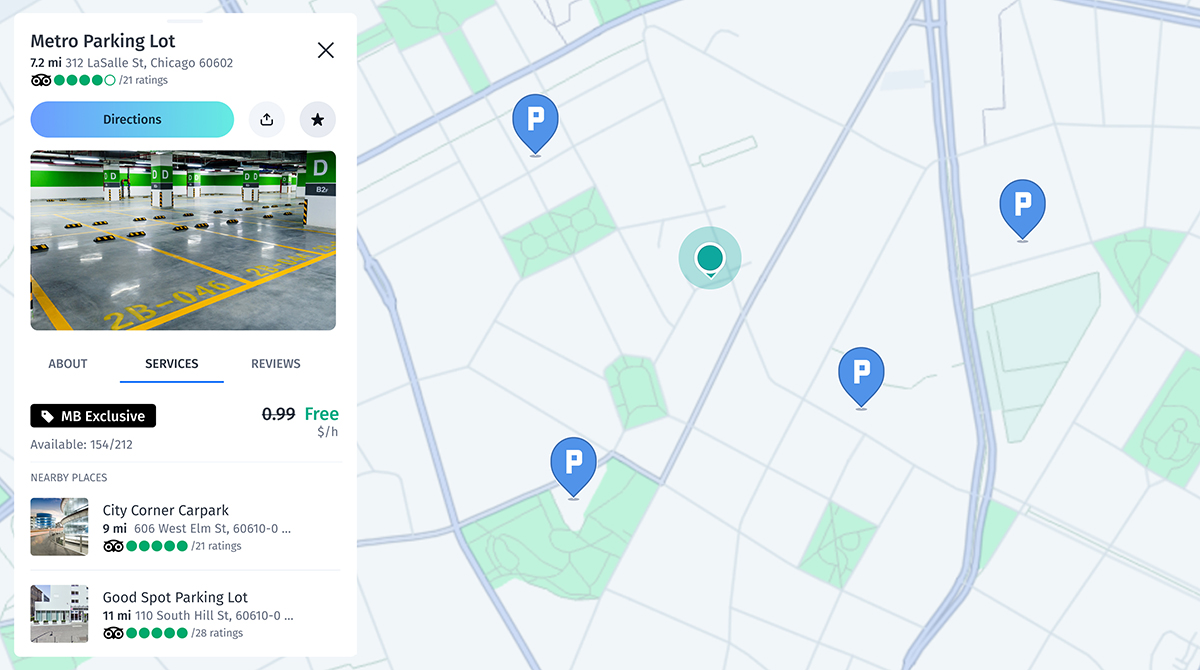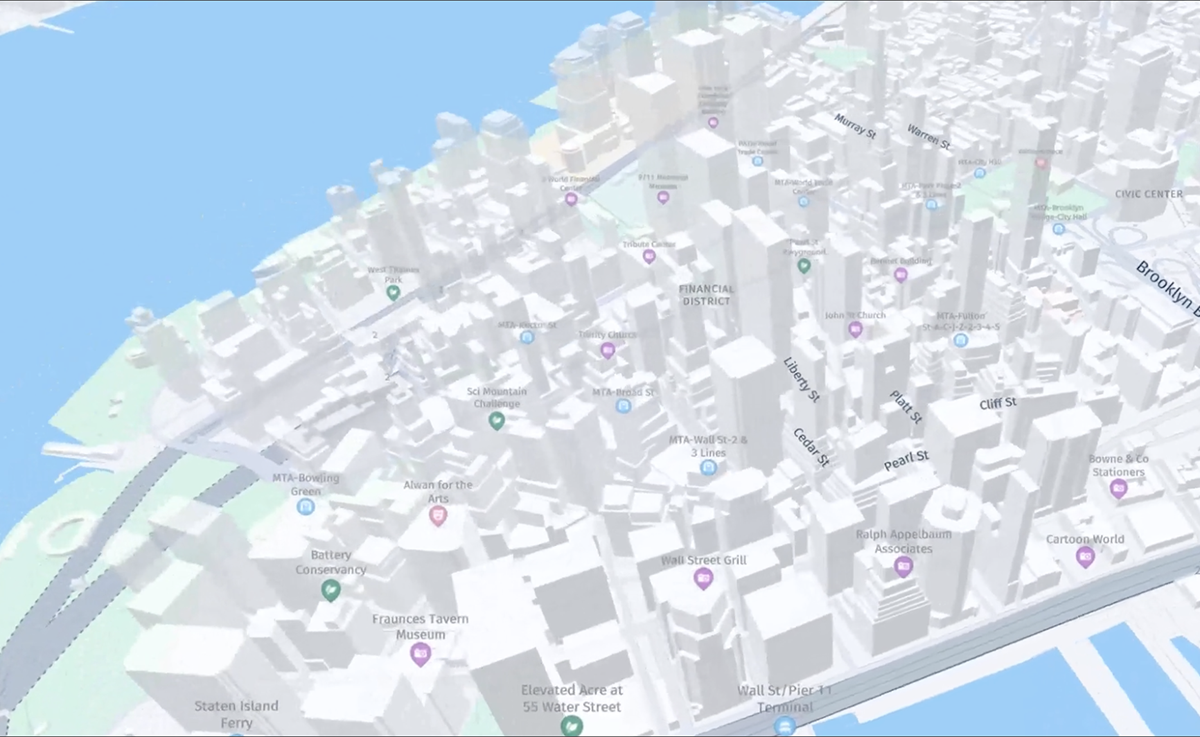Navigation solutions are not simply about getting an individual from A to B. They are frequently employed by users to find out information about a particular place. Often, an individual won’t simply be seeking information about where these places are but also additional data, such as descriptions, opening times and reviews. Places inform projects. They also affect their profitability.
These places, which could be restaurants, golf courses, or any location of note, are also known as Points of Interest (POIs) and the data associated with them can prove to be the difference between a good location mapping solution and a bad one. And bad tools are sure to frustrate developers and customers alike. Ultimately, making decisions based on outdated POI data can be costly.
What is Point-of-Interest data?
First of all, it’s important to define what is meant by POI data. A POI is simply any location point on a map that an individual may find interesting. Often, this could be a physical building, like a library, but it could also be an ATM or parking lot. In fact, a POI may not even be a permanent feature on the map. A local event, for example, would also count as a POI.
A POI is often identified by various data types. It will usually be accompanied by geographic coordinates, an address, name, opening hours, contact details and category. All of this data is then used by navigation solutions to provide accurate location information to users.
The data behind the POI
Although other navigation tools come equipped with a comprehensive list of places, often this is only available online via the web. The likes of Google Maps, Waze and Apple Maps all depend on detailed, reliable POI data but the fact that this information can only be accessed through the internet sets a limitation for developers.
Conversely, the HERE database can be licensed as a standalone dataset, setting it apart from other location solutions. POI data can enhance the navigation experience by providing individuals with richer location context, such as opening hours, phone numbers, fuel types, EV connectors, menus, and more.
HERE Places Extract is a unique database of POIs that enables customers to retrieve the most up-to-date place information available. With HERE Places, there are over 400 different categories broken down into three category-level classifications. Level 1 is more general, such as “Food & Drink,” while category 3 is more specific like “Fine Dining.”
The use cases showing the importance of POI data
There are various reasons why POI data is useful. For instance, individuals navigating using their smartphones will find POI data useful when looking for particular amenities within a geographic area. Businesses may also use POI data to enhance their services and formulate data-driven decisions. Here are a few examples of how POI data is employed today:
- Developers: Access to POI datasets, like HERE Places Extract, allows developers to create applications that leverage up-to-date, reliable location information. These applications could be navigation solutions, comparison software or any other kind of tool that would benefit from real-time POI information.
- Marketers: Accurate POI data can also play an important role in marketing strategies. POI data can inform geofencing and geotargeting campaigns, ensuring that brands reach the most relevant audiences through location-based content. This data allows businesses to serve ads to individuals only when they are near the relevant POIs, ensuring that marketing campaigns deliver the highest possible ROI..
- Site selection: It’s possible to leverage location intelligence to make more informed decisions when opening or closing locations. Investors, construction teams, and project managers can all derive useful insights about a local area from POI data.
- Payment: Credit card data analysis and bank fraud protection units can use POI data to verify payments. For example, data on ATM and merchant locations can help determine whether a payment is fraudulent or not.
- Government: Public bodies that need accurate information on infrastructure, transportation and other services can gain hugely valuable insight from POI data. It can help governments to plan future projects, optimise their services and better meet community needs..

How HERE Places Extract works
HERE Places Extract builds a comprehensive database of places from around the world – covering 196 countries. It works by sourcing millions of records from multiple sources every day. This includes traditional sources like business listings, as well as more modern offerings like community opinion and financial transaction indicators.
Once HERE Places has sourced the relevant data, it’s time to process it using machine learning tools to sort and contextualise the data. This means the data is first cleaned, becoming standardised for global consistency. Then it is accurately located on the HERE map before being carefully organised to eliminate duplicates. Finally, the POI data is blended, with multiple sources merged together into one hybrid dataset, and then scored to indicate accuracy.
After going through big data processing, the POI data is delivered to the customer who can request all of the POIs in a particular region or country or, alternatively, create custom data sets from any of the available countries.
With our flexible, customisable and continuously updated POI database, HERE Places Extract is designed to meet the customer’s need – whether they are an individual looking for the highest-rated restaurant nearby or an infrastructure investor looking to place their next asset where the community needs it most.
With a rich dataset covering more than 120 million places across 196 countries, categorised into over 400 categories, HERE Places offers the POI coverage you need – regardless of your market need or use case.
Access to real-time, reliable POI data will determine the success or failure of your next project. Don’t rely on the same data source you always have if it isn’t serving the needs of your developers and customers. In our next post, we’ll explain why you should consider migrating from Google Places to HERE Geocoding and Search for your POI data and the benefits it can unlock.
Local Eyes B.V. is a leading reseller and integrator of geospatial technologies and data that has been contributing to its client’s success for the past 10 years by optimizing their decision-making and logistic processes. If you’re interested in learning more about how Local Eyes can provide Point-of-Interest data, get in touch today.




